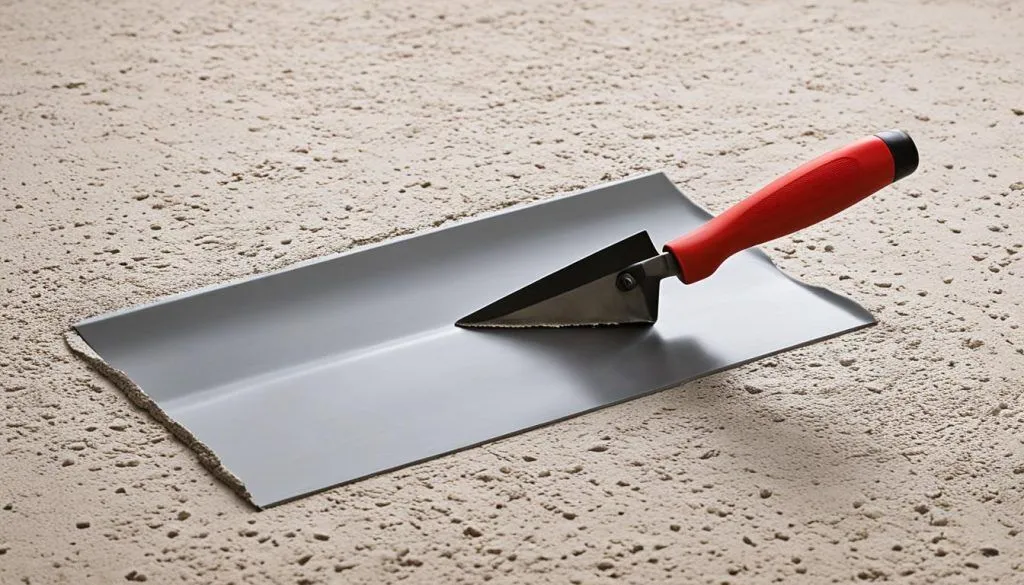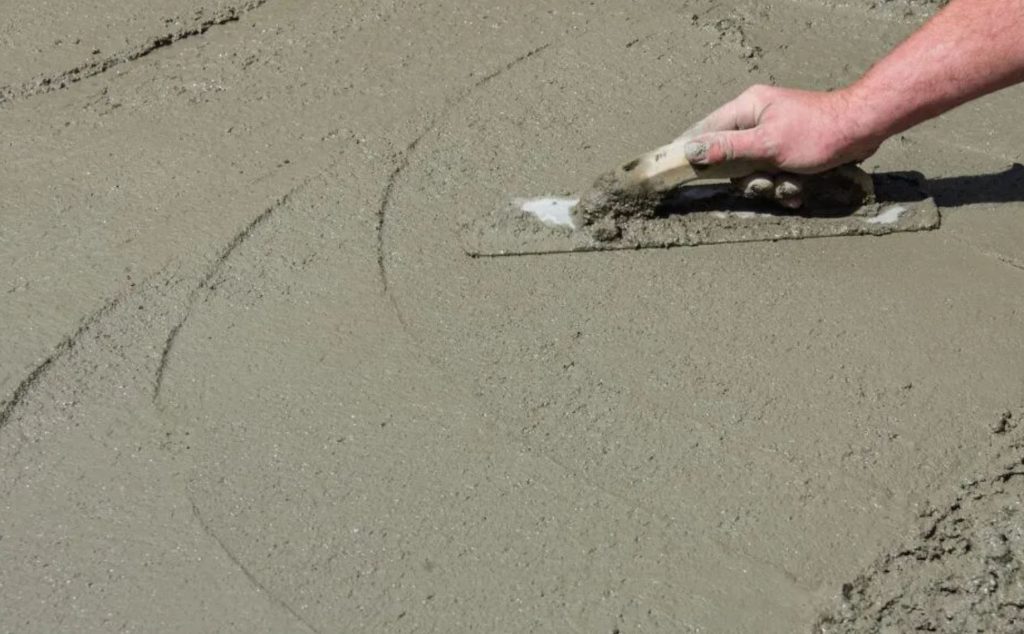Learn how to achieve the perfect trowel finish with expert techniques and tips that will transform your next project.
Table of Contents
Introduction to Concrete Finishing
We’re going to dig into the world of concrete finishing! Just like a painter needs a brush, someone who works with concrete needs special tools. We’ll learn about these cool tools and how they make sidewalks and driveways smooth.
Concrete finishing tools are essential for creating a polished and professional look to concrete surfaces. These tools help in achieving a smooth and level finish, making the concrete not only visually appealing but also durable and long-lasting. One of the key tools used in concrete finishing is the trowel, which plays a crucial role in the finishing process.
When it comes to concrete finishing, achieving a trowel finish is the ultimate goal. This involves using a trowel to smooth out the surface of the concrete, removing imperfections and creating a sleek and uniform appearance. Understanding how to use a trowel and when to trowel concrete are important aspects of mastering the art of concrete finishing.
Throughout this article, we will explore the different types of trowels, the right time to trowel concrete, how to use a finishing trowel effectively, and the importance of taking care of your concrete finishing tools. By the end, you’ll have a better understanding of the world of concrete finishing and the role that trowels play in creating beautiful concrete surfaces.
What is a Trowel?
Let’s explore what a trowel is and the different types you might see. Some have wooden handles, and others are made all in one piece. We’ll find out what makes a good trowel and why it’s important for making concrete look nice.
Types of Trowels
There are many kinds of trowels. Some are for digging, but the ones we’re talking about are for smoothing out concrete.
Parts of a Trowel
We’ll learn about the parts of a trowel, like the handle and the flat part that touches the concrete.
The Right Time to Trowel Concrete
When it comes to troweling concrete, timing is key! You want to make sure you start smoothing out the concrete at just the right moment. If you start too early or too late, you might not get the perfect finish you’re looking for.
So, when is the right time to trowel concrete? It all depends on the concrete mix and the weather conditions. You want the concrete to be firm enough that it won’t get damaged by the trowel, but not so hard that it’s impossible to work with.
Typically, you’ll want to start troweling when the concrete has lost its sheen and is no longer soupy. You can test this by pressing your finger into the concrete. If it leaves a shallow imprint, it’s usually a good time to start troweling.
Remember, practice makes perfect! The more you work with concrete and trowels, the better you’ll get at knowing the right time to start troweling for that smooth finish.
How to Use a Finishing Trowel
Using a finishing trowel is an important step in making concrete surfaces look smooth and professional. Let’s walk through the process of how to use a finishing trowel to achieve that perfect finish.
Step by Step
1. Wait for the Right Time: Before you start using a finishing trowel, make sure the concrete has set just enough. It should be firm to the touch but still have a slight moist sheen on the surface. This is the perfect time to start troweling.
2. Hold the Trowel Correctly: Grip the trowel firmly but comfortably. Make sure your hand is positioned on the handle for better control. Remember, practice makes perfect!
3. Begin Troweling: Start by pressing the flat edge of the trowel against the concrete surface. Use smooth, sweeping motions to spread and level the concrete. Work in small sections to ensure a consistent finish.
4. Overlap Each Pass: As you move the trowel across the concrete, make sure to overlap each pass slightly. This helps to blend the edges and create a seamless finish.
5. Watch Your Pressure: Be mindful of the pressure you apply with the trowel. Too much pressure can dig into the concrete, while too little pressure may not smooth it out effectively. Find the right balance for the best results.
6. Keep It Clean: Periodically clean off any excess concrete buildup on the trowel to prevent it from affecting the finish. A clean trowel ensures a smooth and even surface.
7. Finishing Touches: Once you’ve troweled the entire surface, you can make any final adjustments or touches to perfect the finish. Pay attention to any areas that may need extra smoothing or leveling.
By following these steps and practicing your troweling technique, you’ll be able to achieve a professional and polished look on your concrete projects. Remember, patience and precision are key when using a finishing trowel!
Taking Care of Your Tools
Tools can last a long time if you take good care of them. It’s important to keep your concrete finishing tools in top shape so they can help you create smooth and beautiful surfaces. Let’s dive into how to properly care for your trowels.

Cleaning Your Trowel
After using your trowel to finish concrete, it’s essential to clean it properly to prevent the concrete from hardening on the tool. The best way to clean your trowel is to rinse it with water immediately after use. Use a stiff brush to scrub off any remaining concrete residue. Avoid using harsh chemicals that can damage the metal or wooden parts of the trowel. Once clean, dry the trowel thoroughly before storing it.
Storing Your Tools
Proper storage is key to keeping your trowels in good condition. Store your trowels in a dry and clean area to prevent rust or corrosion. Hang your trowels on hooks or store them in a toolbox to protect them from damage. Make sure to keep them away from moisture and extreme temperatures that can warp or weaken the materials. By storing your tools correctly, you’ll ensure they’re ready for your next concrete finishing project.
Conclusion
Throughout this exploration of concrete finishing and trowels, we’ve uncovered the essential tools and techniques needed to create smooth and polished surfaces. Just like a painter needs a brush, a concrete worker relies on trowels to achieve a flawless finish.
By understanding the different types of trowels, from those with wooden handles to seamless designs, we’ve grasped the importance of selecting the right tool for the job. Each part of a trowel plays a crucial role in the concrete finishing process, ensuring that the surface is level and uniform.
Timing is key when it comes to troweling concrete. Knowing the optimal moment to begin smoothing out the concrete can make all the difference in the final result. With the right timing and technique, a finishing trowel can transform a rough surface into a sleek and professional-looking masterpiece.
Proper maintenance of concrete finishing tools, such as cleaning off concrete residue and storing trowels correctly, is essential for their longevity and performance. By taking care of our tools, we ensure they are always ready for the next project, allowing us to consistently produce high-quality work.
As we conclude our journey into the world of trowels and concrete finishing, we have gained a newfound appreciation for the artistry and precision required to create smooth sidewalks and driveways. Armed with this knowledge, we are now equipped to tackle concrete projects with confidence and skill.
FAQs
Why do you need to finish concrete?
Concrete needs to be smoothed out to make it look nice and even. When you walk on a sidewalk, you want it to be flat and not bumpy, right? That’s why finishing concrete is important.
Can I use any trowel for concrete?
Not all trowels are the same! There are special trowels made just for finishing concrete. These trowels have the right shape and smooth surface to make the concrete look perfect.
How long does it take for concrete to be ready to trowel?
It depends on the weather and the type of concrete, but usually, you have to wait a little while before you can start using a trowel on fresh concrete. If you start too soon, the concrete might not be ready, and if you wait too long, it could be too hard to smooth out.
